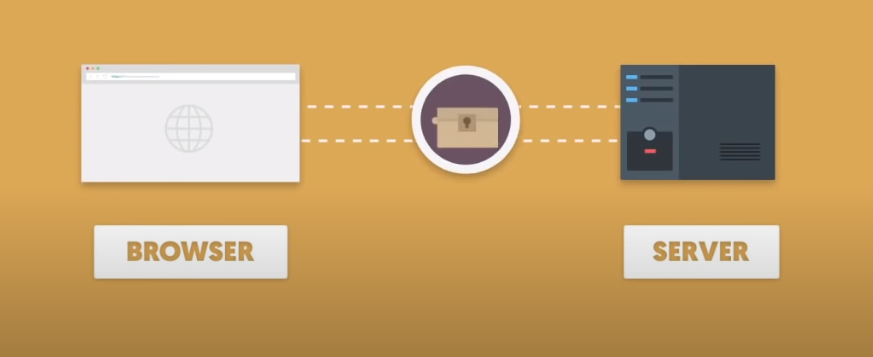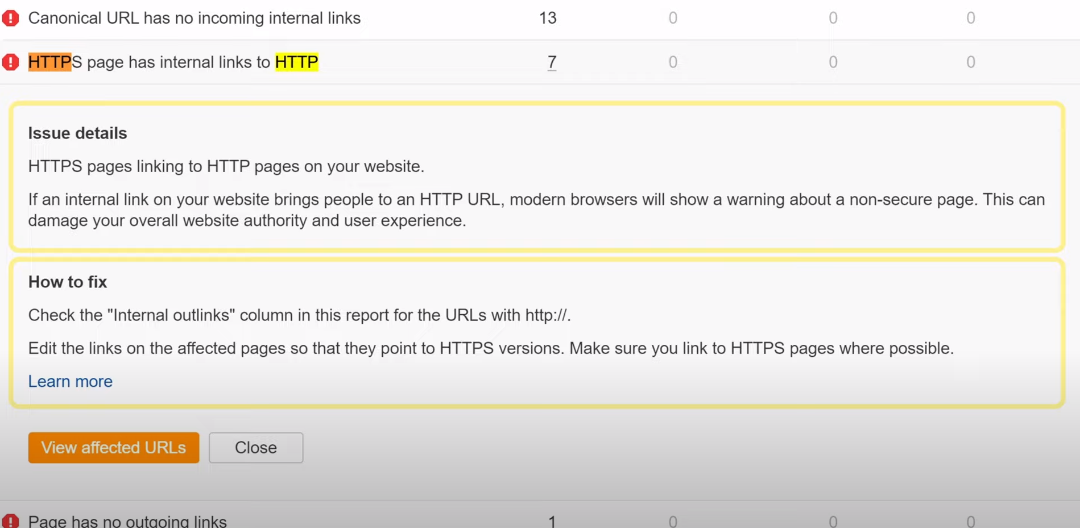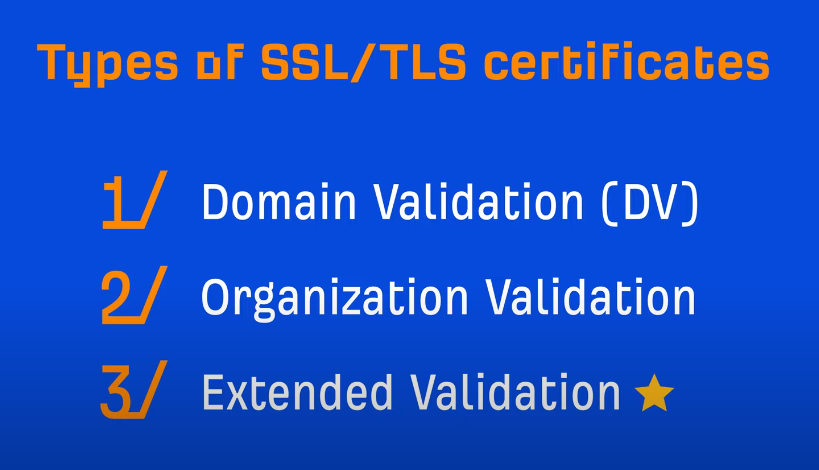Importance of Online Security
Online security is important because it helps protect your personal information and sensitive data from being accessed or stolen by unauthorized individuals or entities. This includes your financial information, login credentials, and other sensitive data that you may share online. With the increasing prevalence of cyberattacks and data breaches, it is crucial to take measures to ensure that your online activity is secure and protected.
Understanding HTTPS

HTTPS stands for Hypertext Transfer Protocol Secure. It is a protocol for secure communication over the Internet. It is a widely used technology to secure online transactions, such as online banking, e-commerce, and sensitive data transfers. HTTPS encrypts the data that is being transmitted between the user’s browser and the website, making it more difficult for hackers to intercept and steal sensitive information. You can recognize a website that uses HTTPS by the padlock symbol in the address bar of your browser.
How does HTTP work?

HTTP (Hypertext Transfer Protocol) is a protocol for transmitting data over the internet. It is the foundation of data communication on the World Wide Web. When a user requests a webpage from a server, the browser sends an HTTP request to the server. The server then responds with an HTTP response, which contains the requested content. HTTP works on a client-server model, where the client (usually a web browser) initiates the request and the server responds with the requested information.
Limitations of HTTP
HTTP has several limitations, including:
1. Statelessness: HTTP is a stateless protocol, which means that it does not maintain any information about previous requests. This can make it difficult to track user sessions and maintain user-specific data.
2. Security: HTTP does not provide any built-in security features, which makes it vulnerable to attacks such as eavesdropping, man-in-the-middle attacks, and data tampering.
HTTPS vs HTTP

HTTPS (Hypertext Transfer Protocol Secure) is a more secure version of HTTP that uses encryption to protect data sent between a website and a user’s browser. HTTPS addresses some of the security limitations of HTTP by providing authentication and encryption. This helps to prevent data tampering, eavesdropping, and other security threats. HTTPS is commonly used for online transactions, such as online banking and shopping, as well as for secure login pages and other sensitive information.
HTTPS Handshake
The HTTPS handshake is the process that occurs when a user’s browser requests a secure connection with a website using HTTPS. The handshake involves a series of steps that establish a secure connection between the browser and the website’s server. During the handshake, the browser and server exchange a series of messages to agree on the encryption and authentication methods to be used for the session. The browser sends a “client hello” message to the server, which includes information about the encryption methods it supports.
Way HTTPS Handshake Work
During the HTTPS handshake, the browser and server exchange a series of messages to establish a secure connection. Here are the steps involved:
1. The browser sends a “client hello” message to the server, which includes information about the encryption methods it supports.
2. The server responds with a “server hello” message, which includes the encryption method that will be used for the session.
3. The server sends its digital certificate to the browser, which contains the server’s public key.
SSL/TLS Certificates

SSL/TLS certificates are digital certificates that are used to establish a secure connection between a web server and a browser. They are used to ensure that the website being accessed is authentic and that the data being transmitted is encrypted and secure. When a browser connects to a website using SSL/TLS, it checks the website’s SSL/TLS certificate to verify that it is valid and issued by a trusted certificate authority. The certificate contains information about the website, such as its domain name and public key.
Role of the Certificate Authority
The Certificate Authority (CA) plays a crucial role in the SSL/TLS connection process. It is responsible for issuing SSL/TLS certificates to websites and verifying their authenticity. The CA acts as a trusted third party that verifies the identity of the website owner and ensures that the certificate is not fraudulent or compromised. When a browser connects to a website, it checks the SSL/TLS certificate to verify that it has been issued by a trusted CA. If the certificate is valid, the browser establishes a secure connection.
The Role of Public Key Infrastructure (PKI)
Public Key Infrastructure (PKI) is a system that provides a secure way to exchange digital information and verify the identity of the parties involved. PKI uses a combination of public and private keys to encrypt and decrypt data, authenticate users, and establish secure communication channels. In the context of SSL/TLS, PKI plays a critical role in verifying the authenticity of SSL/TLS certificates.
Overview of PKI
PKI stands for Public Key Infrastructure, which is a system that provides a secure way to exchange digital information and verify the identity of the parties involved. PKI uses a combination of public and private keys to encrypt and decrypt data, authenticate users, and establish secure communication channels. It is a crucial technology for ensuring the authenticity and security of digital communication.
How Does PKI Work?
PKI works by using a trusted third party, called a Certificate Authority (CA), to issue digital certificates that verify the identity of users and devices. These certificates contain a public key that is used for encryption and a private key that is kept secret and used for decryption. When a user or device wants to establish a secure connection with another party, they first obtain a digital certificate from a trusted CA.
Importance of PKI in HTTPS
PKI plays a crucial role in HTTPS (Hypertext Transfer Protocol Secure) by encrypting the communication between a user’s browser and a website’s server. When a user visits a website that uses HTTPS, their browser first checks the digital certificate of the website to ensure that it is valid and issued by a trusted CA. If the certificate is valid, the browser then uses the public key contained in the certificate to encrypt the data being sent to the server.
HTTPS Vulnerabilities
HTTPS is generally considered to be a secure protocol, but there are still some vulnerabilities that can be exploited by attackers. One common vulnerability is known as a man-in-the-middle (MITM) attack, where an attacker intercepts the communication between the user’s browser and the website’s server. To prevent this type of attack, HTTPS uses PKI to ensure that the digital certificate presented by the server is valid and issued by a trusted CA.
Types of HTTPS attacks
Several types of HTTPS attacks can compromise the security of the protocol. One of the most common is the SSL Stripping attack, where the attacker intercepts the HTTPS request and downgrades it to HTTP, making it vulnerable to attacks. Another type of attack is the Heartbleed vulnerability, which allows an attacker to access sensitive information such as usernames and passwords by exploiting a flaw in the OpenSSL library.
Way to Prevent HTTPS Attacks
Preventing HTTPS attacks requires a multi-layered approach to security. Here are some steps that can be taken to prevent HTTPS attacks:
1. Implement HTTPS Everywhere: This is a browser extension that forces websites to use HTTPS instead of HTTP. It helps prevent SSL stripping attacks.
2. Use a strong SSL/TLS certificate: Make sure to use a strong SSL/TLS certificate that is issued by a trusted Certificate Authority (CA). This will help prevent man-in-the-middle attacks.
Conclusion
In conclusion, preventing HTTPS attacks is crucial for maintaining the security of online communications and transactions. By implementing HTTPS Everywhere and using a strong SSL/TLS certificate, users can significantly reduce the risk of these types of attacks. However, it’s important to remember that security is an ongoing process and requires constant vigilance and updates to stay ahead of evolving threats.
FAQs
How do I know if a website is using HTTPS?
To know if a website is using HTTPS, look for a padlock icon in the address bar of your web browser. The URL of the website should also start with “https://” instead of “http://”. Additionally, some web browsers may display a green address bar or other indicators to show that the website is using HTTPS.
Is HTTPS completely secure?
HTTPS is a secure protocol that encrypts the data exchanged between the website and the user’s browser. However, no security system is completely foolproof, and there is always a risk of vulnerabilities being discovered and exploited. It is important to keep the HTTPS implementation up-to-date and follow other security best practices to minimize the risk of attacks.
What happens if a website does not use HTTPS?
If a website does not use HTTPS, the data exchanged between the website and the user’s browser is not encrypted and can be intercepted by third parties. This means that sensitive information such as login credentials, credit card details, and personal information can be compromised. Additionally, modern browsers now display warnings to users when they visit non-HTTPS websites, which can harm the website’s credibility and reputation. Therefore, it is highly recommended for websites to use HTTPS to ensure the security and privacy of their users.
How can I ensure my website is secure using HTTPS?
To ensure that your website is secure using HTTPS, you can follow these steps:
1. Obtain an SSL/TLS certificate: You need to obtain an SSL/TLS certificate from a trusted certificate authority (CA). This certificate will enable HTTPS on your website and encrypt the data transmitted between your website and users’ browsers.
2. Install the certificate on your server: Once you have obtained the SSL/TLS certificate, you need to install it on your web server.
